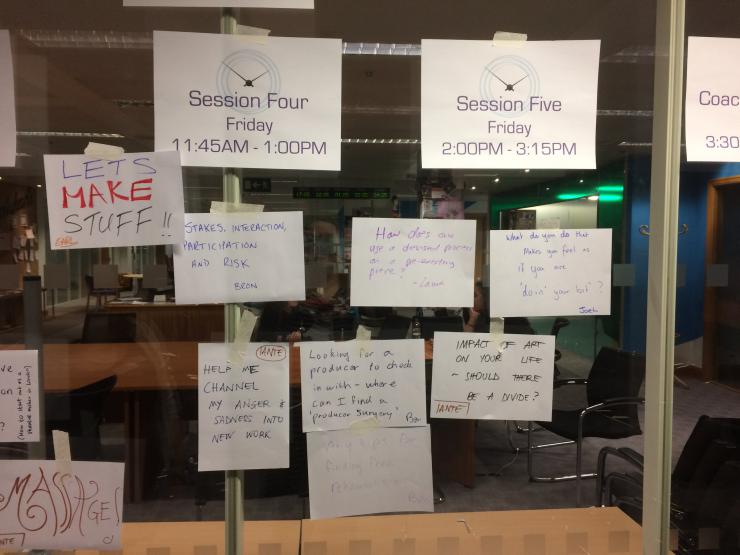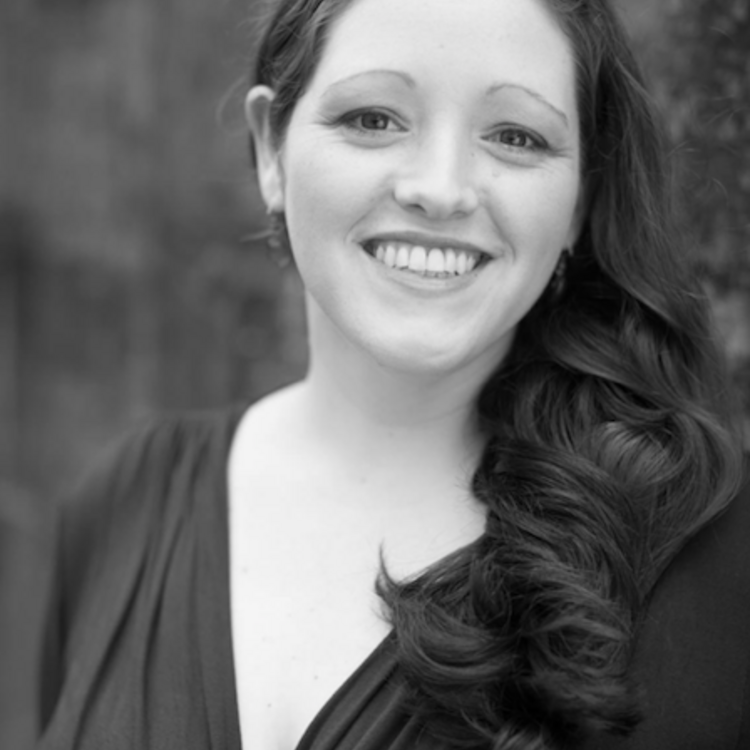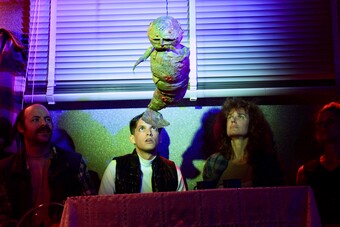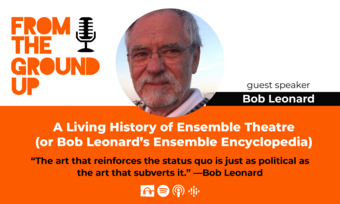Opening Space for Collaboration and Change
Can vision be collaborative? How can I balance inclusivity, safety, quality, and rigor? Why do I keep trying to make collaborative work, when it seems so much slower and more difficult than doing it myself? I’ve been asking myself these questions for the last ten years or so, and trying new ways to answer them every time I direct a piece of theatre. I’ve recently stumbled across a revolutionary way of working that has become the foundation of my collaborative practice: Open Space.
Open Space is a radically democratic and inclusive format for people to self-organize around any issue or idea that they're passionate about. It works for having conversations about the state of the theatre industry, for running a production meeting, and for creating a piece of performance. Outside the world of theatre, Open Space has been used for every kind of meeting you can imagine, even for international peace talks.
It is my hope that widespread adoption of Open Space could be a powerful way for theatre artists to make our work more inclusive, diverse, and democratic.
The story goes that Harrison Owen spent a year organizing a conference with keynote speakers and panel discussions. When he asked for feedback, he learned that the most useful parts of the event were the coffee breaks: the unplanned time when delegates could speak to each other as equals about the ideas they had passion for. So Owen invented Open Space as a way to bring people together with the flexibility and energy of a really good coffee break.
I was introduced to Open Space by a London theatre company, Improbable. Co-Artistic Director Phelim McDermott facilitates an annual conversation about theatre called Devoted & Disgruntled (D&D for short). I was so inspired by the feeling of community and possibility at D&D events that I decided to use Open Space to devise performances with my company and to facilitate workshops for theatremakers.
Let me say up front: I’m not an expert. That’s one of the brilliant things about Open Space. We can stop pretending to have all the answers. Nobody knows everything—not even a director—and it’s truly liberating to admit that and begin work from a place of curiosity and vulnerability and shared responsibility.
Open Space has been a way for me to unlearn the unhelpful habits I picked up in my training, particularly my desire to follow the rules, to get everything right, and to be rewarded by someone else’s approval. When I understood that creative work does not operate in terms of right and wrong, and that the only approval I needed was my own, I was able to banish fear from the process. Working without fear has changed everything for me and my collaborators. I hope that by sharing my experience with Open Space, I might inspire you to try it yourself.
What Happens in Open Space
Open Space uses five principles and one law. The principles are descriptive, not prescriptive. They are not rules to follow; they are just what happens when we get out of our own way and get to work.
Whoever Comes Are The Right People
The Right People are the ones who care enough to turn up and do the work. We don’t need to worry about the people who have chosen not to show up. They’re not going to get in our way.
Whenever It Starts Is the Right Time
We’re often told, “five minutes early is on time, on time is late, late is unacceptable.” But that’s not really how life works, is it? When we agree that whenever it starts is the right time, we create an environment of readiness and inspiration instead of stress and shame.
Wherever it Happens Is the Right Place
We don't control the place where creativity happens, any more than we control the timing. The next big breakthrough might happen in the studio, or on the bus home, or in the shower. We just have to be receptive. We can open the space anywhere.
Whatever Happens Is the Only Thing That Could Have
I love what Phelim McDermott of Improbable says: “If you fight with reality, you will only lose about 100 percent of the time.” Open Space encourages us to let go of our expectations of ourselves and each other, and respond to what's really happening in the moment. This leads to freedom, surprise, and even better ideas.
When It’s Over, It’s Over
Have you ever been in a rehearsal when the work feels done, but you still have an hour, so you run the scene again and again, and it gets worse? In Open Space, when you’re done, you can stop, or move on to something else. The opposite of this principle is also true: when it's not over, it's not over. If there is still work to do, you can find a way to keep going.
The Law of Passion and Mobility
The only law of Open Space states that if you are not learning, not contributing, or you’ve lost interest, you must leave and go do something else. In Open Space, we're always working with (not against) our instincts and energy, and we're each responsible for our own experience. It’s not rude to leave when you’re bored, it’s the law. In fact, if you continue working on something that you’re not passionate about, you’ll only hinder your collaborators. Or, if you are really passionate about the work you’re doing, the law might remind you that physical presence is not enough—you can choose to stay and engage more deeply.
Bumble Bees & Butterflies
In nature, bumblebees take pollen from one flower to another; in Open Space, people might take an idea from one conversation to another, cross-pollinating different sessions of work. In nature, butterflies don’t appear to do much besides sit around looking pretty; in Open Space, people might look like they’re just taking a break with a cup of tea, or gossiping. This is valuable work. If we’re going solve the complex questions facing us as artists, we might need to talk to a friend, or daydream for a while.
Be Prepared to Be Surprised
Just in case anyone is still holding on to preconceived expectations of what ought to happen in a rehearsal room or a production meeting or a conference, it’s a useful reminder to be prepared to be surprised. Open Space places a high value on surprise, serendipity, and discovery.
“Open Space runs on passion and responsibility. Without passion, nobody is interested. Without responsibility, nothing will get done.”—Harrison Owen
If you’re facilitating an Open Space, you’ll want to put the principles and the law on signs around the room, and explain them at the beginning of the day. Simply stating these principles at the beginning of an event can radically shift the atmosphere in the room. An ensemble working together over a period of time can adopt these principles as a shared philosophy; an ethos for collaboration that complements whatever tools and techniques you might be using to create performance.

How Open Space Works
Don’t let this long essay fool you: Open Space is very simple. I often say to people that it’s basically a bit of go-with-the-flow philosophy and some post-it notes. My goal here is to give you enough information to try it yourself.
Open Space begins with a question and an invitation. The question focuses the group around a shared goal, but the issue should be complex enough to elicit a variety of responses from your collaborators. The invitation is a personal note from the artist(s) who convened the gathering, saying why they care about that question.
The question and the invitation are how you get people into Open Space. Here’s how it works once you’re in the room.
Start with everyone sitting in a circle. The facilitator welcomes the group, states the question, and explains how the event will run.
There’s a little ritual of “opening the space”: the facilitator walks around the circle and invites everyone to silently check in with themselves and the group. This is a moment of arrival and getting ready to work together.
In the middle of the circle, there are clipboards, pens, and pieces of paper. Everyone present has the opportunity to “call sessions” about whatever they want to work on. This means going to the middle of the circle, writing down a short title for the session, putting their name on it, and announcing it to the group.
A session can be anything: a question, an idea, an action, an offer, a request for help. Sessions usually relate to the question that focuses each Open Space event, but nothing is off limits. Sessions might be inspired by techniques the company wants to explore, ideas about characters, storyline, themes or what the show should feel like. Anyone in the team can call a session: actors, designers, writers, stage managers, directors, producers.
Once someone has called a session, they stick it to the wall with masking tape and it becomes part of the agenda. The agenda is arranged on a large wall with post-it notes to assign time slots and locations for the sessions to happen. Then we get to work.
The mechanics of “getting to work” change a little depending on who is in the room and the size of the group. When I facilitate the London Devised Theatre Intensive, we fill the wall with sessions in no particular order, and then I support the participants to negotiate what they want to do first. At this point, I often say, “Now we’re going to learn about our group dynamic.” Someone will step forward and declare a preference for what they urgently want to work on. I’ll ask them what materials and space they need and help them set up. The group may decide to work on one session all together, or multiple sessions may be happening at the same time. The same is true if I’m directing a project in Open Space—but I’ll add my voice to the negotiations about what we’re going to work on and when.
There can be a strong sense of FOMO (fear of missing out) when there are many simultaneous sessions. At Devoted & Disgruntled, where there are over three hundred people working on more than twenty sessions at a time, Improbable has a wonderful system for reports, which you can find online here. The person who called the session takes responsibility for creating a report (in writing, photos, video, or however they wish). In a smaller Open Space like the London Devised Theatre Intensive, I find it’s usually enough to collect up any papers from past sessions on a “resources” wall, and encourage people to catch up with each other informally to find out the highlights of sessions they’ve missed.
At the end of the day, the facilitator will gather everyone together and “close the space.” This involves bringing the group back into a circle and giving everyone the chance to reflect on the day. Harrison Owen’s closing ritual is inspired by a Native American “talking stick ceremony.” When you have the stick (a pen will do), you can say whatever you need to say; when you don’t have the stick, you can listen. You don’t have to say anything if you don’t want to. If you’re the facilitator, try to be the last person who has the talking stick, so you can then close the space with the same ritual you used to open the space at the beginning.
If you’re working for multiple days in Open Space, then you won’t need to open and close the space each day. For example, in a week-long project R&D with my company Pinecone Performance Lab, we used the talking stick to facilitate morning announcements as a check-in process with everyone at the beginning of the day, and evening news to check out with the group at the end of the day.
You Can Try It Yourself
Open Space works with any number of participants, into the thousands. The format can scale up to match the number of people, square feet of space, and pieces of paper you have. It can also scale down; I’ve used Open Space on my own, calling sessions to help me structure my work on a solo show.
Open Space needs just a few materials: a physical space with a blank wall, paper, pens, masking tape, post-it notes, moveable chairs, and signs to remind us of the principles and law. A table with free coffee and tea is strongly recommended.
To use Open Space effectively in theatre, I would add that you need a great deal of trust, not only in the process, but in your team. Many directors say they want to work collaboratively, but in practice, they micromanage the artistic impulses of everyone else in the room. They don’t know how to give up control, and then they complain that the actors are behaving like puppets and just want to be told where to stand and what to say.
I’ll admit it: I have been that director. Then I realized that lip service to collaboration wasn’t enough. I could tell people “this is a collaborative process” until I was blue in the face, but in order to invite true collaboration, I needed to change the structure. How could actors, writers, and designers meet me in a collaborative spirit, if I was still holding on to the hierarchy that puts the director at the top?
I see strong connections between embracing Open Space as way of creating theatre and our ability to lead our industry into a more inclusive future. How can we hope to make our theatre more diverse, if we are still holding tight to the hierarchies that elevate gatekeepers (usually middle-class middle-aged straight white able-bodied cis male gatekeepers) to the top of the power structure?
Open Space reliably creates an environment for a diverse group of artists to share ownership and responsibility for the work. It liberates our creativity and reflects our values: generosity, community, equality, presence, surprise, and possibility. It is my hope that widespread adoption of Open Space could be a powerful way for theatre artists to make our work more inclusive, diverse, and democratic.
Let me say again: I’m not an expert. I’m still learning how to adapt the format of Open Space to various creative situations. I’m still wrestling with the question, “Can vision be collaborative?” I’m still finding the line between being a facilitator and a director in Open Space. I discover something new each time I use the format and make adjustments based on what’s happening in the room. The only way to learn to do it is to do it. If you’d like to give this a try yourself, I recommend Harrison Owen’s book Open Space Technology: A User’s Guide. If you’re in the UK, come to a Devoted & Disgruntled event or the London Devised Theatre Intensive to see the format in action. And if you’d like to talk about how Open Space could work with your company or creative projects, please feel free to get in touch in the comments or via my website.










Comments
The article is just the start of the conversation—we want to know what you think about this subject, too! HowlRound is a space for knowledge-sharing, and we welcome spirited, thoughtful, and on-topic dialogue. Find our full comments policy here
This is fantastic! I have worked with Open Space in my conflict transformation work but hadn't integrated into my directing/devising process. Thank you for the inspiration and practical guide.
Thanks so much for your note, Heidi! I hope you get a chance to bring Open Space into your creative process soon. Feel free to get in touch, I'd love to hear how it goes.